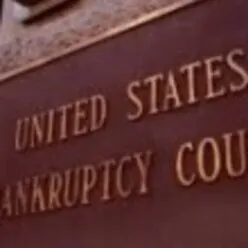Bankruptcy can provide relief from debt, but it is important to understand the different types available. Chapter 7, 11, and 13 are the most common forms of bankruptcy, each offering unique benefits and drawbacks. Knowing the differences between them can help you make the best decision for your financial future.
Question 1: What is bankruptcy?
Answer: Bankruptcy is a legal process that allows individuals or businesses to eliminate or restructure their debts. It is a way for debtors to get a fresh start and be relieved of the burden of debt.
Question 2: What are the different types of bankruptcy?
Answer: There are several types of bankruptcy, including Chapter 7, Chapter 11, Chapter 12, and Chapter 13. Each type of bankruptcy has different eligibility requirements and offers different benefits.
Question 3: What is Chapter 7 bankruptcy?
Answer: Chapter 7 bankruptcy is the most common type of bankruptcy. It is also known as liquidation bankruptcy because it involves the liquidation of assets to pay off creditors. It is designed for individuals who cannot pay their debts and do not have the ability to repay them.
Question 4: What is Chapter 11 bankruptcy?
Answer: Chapter 11 bankruptcy is a type of reorganization bankruptcy. It is designed for businesses that need to restructure their debts in order to remain in operation. It allows businesses to reorganize their debts and develop a repayment plan.
Question 5: What is Chapter 12 bankruptcy?
Answer: Chapter 12 bankruptcy is a type of bankruptcy designed specifically for family farmers and fishermen. It allows them to reorganize their debts and develop a repayment plan.
Question 6: What is Chapter 13 bankruptcy?
Answer: Chapter 13 bankruptcy is a type of reorganization bankruptcy. It is designed for individuals who have a regular income and need to reorganize their debts. It allows individuals to develop a repayment plan and pay off their debts over a period of time.
Question 7: What are the benefits of filing for bankruptcy?
Answer: The benefits of filing for bankruptcy include eliminating or restructuring debt, stopping creditor harassment, and preventing foreclosure. It can also help individuals rebuild their credit and get a fresh start.
Question 8: What are the drawbacks of filing for bankruptcy?
Answer: The drawbacks of filing for bankruptcy include a negative impact on credit, the inability to obtain new credit, and the possibility of losing certain assets.
Question 9: How long does it take to file for bankruptcy?
Answer: The amount of time it takes to file for bankruptcy depends on the type of bankruptcy and the complexity of the case. Generally, it takes several months to complete the process.
Question 10: Is bankruptcy the right choice for me?
Answer: Bankruptcy is not the right choice for everyone. It is important to speak with a qualified bankruptcy attorney to determine if bankruptcy is the best option for your situation.
